April 26, 2024
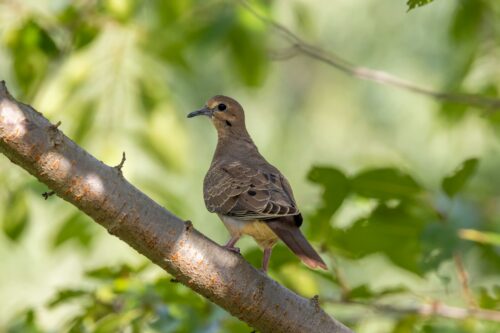
To celebrate World Migratory Bird Day this month, we have a special guest contributor, Naamal De Silva, Vice President of Together for Birds at American Bird Conservancy (ABC). Naamal and the team at ABC worked closely with PLT to develop an incredible learning resource and activity collection, Together for Birds.
We hope you enjoy this guest-authored article and that it inspires thoughtful conversations with the children in your life.
What makes a home? What does your home look, feel, and smell like? Is it a refuge, making you feel safe or cozy? Is your home your apartment or house? Do you feel most at home in a garden, at the library, by a lake, or at your grandparents’ farm?
We all deserve safe and comfortable homes, close relationships, and nourishing food. When we have those things, we are more likely to be happy and more likely to thrive, whether at school or work. This is true for people, and it is just as true for birds. As you think about or walk around your neighborhood or schoolyard, consider what different homes look like for humans. Can you spot any places that are homes for birds? As you walk or stay still and observe, do you hear more birds in certain places? Do you see any trees, bushes, chimneys, or ledges that might be safe places for birds to spend the day and night or to build a nest?
And considering your own home again, is it where your parents grew up? If not, why did your family move from one home to another?
People often move from one place to another to be closer to family because their home place has become unsafe or because they are seeking work to feed themselves and their families. It is not too different for birds. The birds that stay in one place year-round might roost in the same tree each night or might move a short distance. Other birds, called migrants, move far greater distances in search of food and nest sites.
In the northeast United States, where I live, we are in the middle of spring migration, where billions of birds are flying hundreds or thousands of miles from homes in the Caribbean, Central, and South America to the places in the United States and Canada where they will find mates, create new homes, raise babies, and find more abundant food. In these cooler places, trees are blooming, and there will be more and more insects, seeds, and nectar over the next few months. As these abundant sources of food dwindle in the fall, these billions of birds from over 300 species will return once more to homes in warmer subtropical and tropical places. Most birds use celestial cues to fly along remarkably consistent “flyways.”
You can check out how many birds are flying above your home using Bird Cast. According to that database, over 7 million birds have flown over Washington, D.C, so far this spring. I think that is amazing! This map shows the likely timing of peak migration in the continental United States – when the largest number of birds will be flying over your region. Turning lights off can help migrating birds find their way.
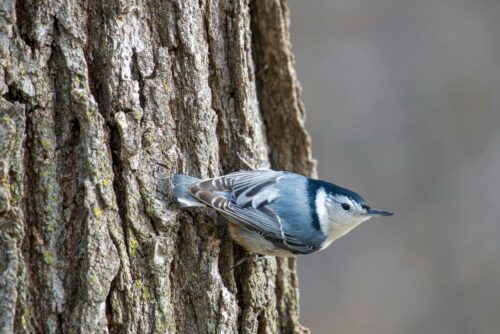
You can celebrate all these remarkable birds on May 11 and again in October during World Migratory Bird Day. This year, the focus is on insects–they are declining throughout the world due in part to the loss of their own homes in native trees and wild grasses and among dead leaves and on creek beds. Like birds and people, they get sick because of the overuse of toxic pesticides and for a number of other interconnected reasons. The good news is that, together, we can protect insects, birds, and each other in many ways, from planting native species in our schoolyards and gardens to advocating for more trees in cities to volunteering with local environmental organizations. There are also simple ways that you prevent birds from colliding into windows. My own organization, American Bird Conservancy, works to protect migrating birds throughout their journeys and in all the places they call home.
I believe that caring for birds begins with noticing them. The more we pause, ask questions, and observe, the more likely we are to fall in love with their songs, feathers, and remarkable perseverance. This noticing goes even further–the more we take this time for reflection, especially if it is out in a garden or a forest or by a lake or the ocean, the better we are likely to feel. So this year, as we celebrate the marvels of migration, I encourage you to pause, to look or listen, and to ask questions.
American Bird Conservancy works for birds, and we are inspired by birds in so many ways. We would love to hear what inspires you: what birds, memories, books, and wild places? Take this brief survey to tell us about your inspiration!
Finally, I’ll leave you with some books:
Books for Adults
Dawn Songs: A Birdwatcher’s Field Guide to the Poetics of Migration, by Jamie K. Reaser and J. Drew Lanham, proceeds go to American Bird Conservancy’s Conservation and Justice Fellowship program
The Nature Fix, by Florence Williams
Slow Birding: The Art and Science of Enjoying the Birds in Your Own Backyard, by Joan E. Strassmann
Backyard Bird Chronicles, by Amy Tan
Spark Birds, edited by Jonathan Franzen, from Orion
Alfie and Me, by Carl Safina
Books for Kids
Migration: Exploring the Remarkable Journeys of Birds, by Melissa Mayntz
Lights Out: A Movement to Help Migrating Birds, by Jessica Stremer, illustrated by Bonnie Pang
Follow the Flyway: The Marvel of Bird Migration, by Sarah Nelson, illustrated by Maya Hanisch
How to Find a Bird, by Jennifer Ward, illustrated by Diana Sudyka
The Little Book of Backyard Bird Songs, by Andrea Pinnington and Caz Buckingham
Outside In, by Deborah Underwood, illustrated by Cindy Derby
Birds, by Carme Lemniscates
Crows: Genius Birds, by Kyla Vanderklug, Science Comics
Bird Boy, by Matthew Burgess, illustrated by Shahrzad Maydani
It’s not a book, but I’d also recommend the game Wingspan, especially for older kids and adults
Continue Exploring the Wonder of Birds
PLT’s resources provide engaging ways for children to discover birds and nature. Here are some fun activities to do with the learners in your life:
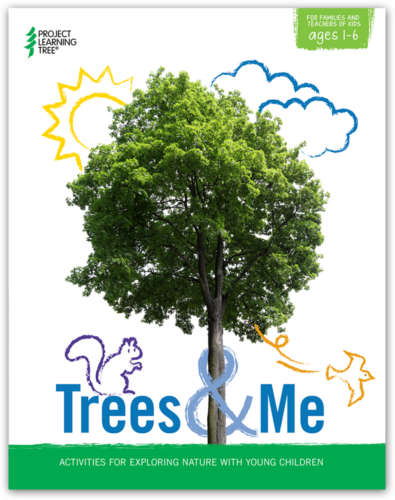 Ages 1-6 | Trees & Me: Activities for Exploring Nature with Young Children
Ages 1-6 | Trees & Me: Activities for Exploring Nature with Young Children
Activities within Trees & Me encourage children to slow down and take notice of nature and what’s around them, using their five senses.
- The Shape of Things – As part of this activity, little learners make their own binoculars out of paper towel tubes, perfect for spotting beautiful birds outside.
- Sounds Around – One of the experiences of this activity is creating a forest concert. Encourage children to close their eyes and use their listening ears. From birds chirping and squirrels chattering to the wind rustling leaves and cars driving down the road, you might hear a variety of sounds. Children get to create their own forest music using their bodies and voices to mimic the sounds they hear in nature.
- Tree Textures – What makes the perfect home for a bird? In this activity, children get to make their very own bird nest using different materials.
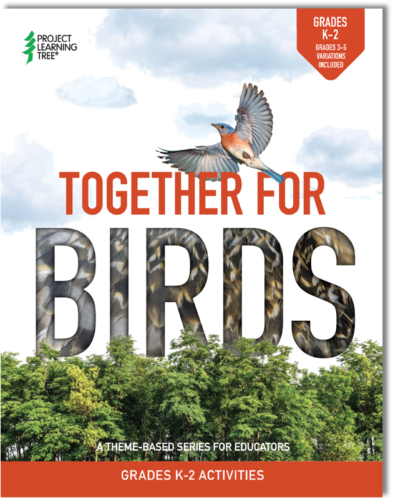 Grades K-5 | Together for Birds Activity Collection
Grades K-5 | Together for Birds Activity Collection
PLT and ABC came together to create a special downloadable activity collection to invite students to investigate ways that birds and other living things depend on their habitat (home) to live. Here are the activities:
- Trees as Habitats – Students inventory the birds and other organisms living in, on, or around trees and learn how trees help them get the things they need to live.
- Birds and Bugs – Students discover the value of protective coloration as they become birds in search of colored bugs.
- Neighborhood Naturalist – Students will explore a nearby habitat–their backyard, schoolyard, or other outdoor setting–to look for signs of animals living there.
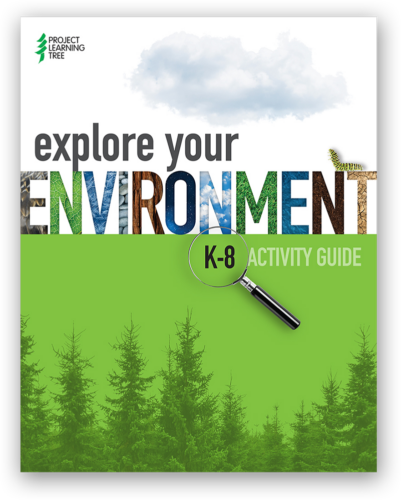 Grades K-8 | Explore Your Environment: K-8 Activity Guide
Grades K-8 | Explore Your Environment: K-8 Activity Guide
Check out a few of the many activities within our K-8 guide that help students experience nature.
- Charting Biodiversity – In this activity, students in grades 3-5 discover how plants and animals are adapted for survival, from where they live to how they move and their physical characteristics.
- Life on the Edge – Students in grades 6-8 model processes that can lead to species, like birds, becoming endangered. They will conduct research about a particular species and create a “public relations campaign” to raise awareness on behalf of that animal or plant.
Try these and many more activities with your students to introduce them to the incredible natural world!
From now until May 18, 2024, we’re offering a special 20% discount on select PLT e-books: Trees & Me, Explore Your Environment, and Green Jobs: Exploring Forest Careers. Use coupon code EARTHDAY24 at checkout.


